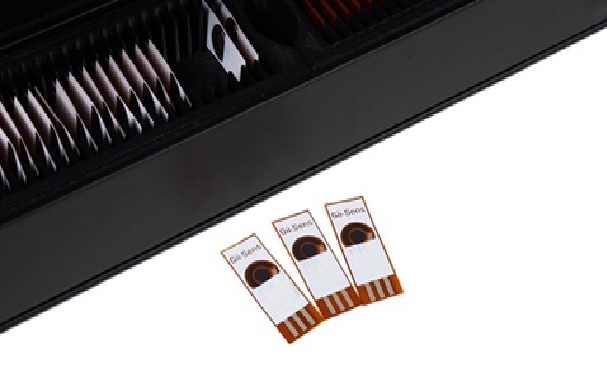Sensor Based on Graphene for Measuring Blood Glucose Levels
The inexpensive glucose measuring sensor more robust than existing blood glucose measuring systems employed in homes and hospitals.
Maintaining blood sugar levels is essential for people suffering from diabetes, a chronic condition that affects millions of people globally. To do so, a patient is required to check and monitor their blood sugar levels several times a day. Many current biosensors use enzymes that bind glucose and produce an electric current proportional to the concentration of glucose in the blood sample. However, their reliability compared to clinical laboratory methods is not robust. [1]

Figure 1. Sensor Based on Graphene for Measuring Blood Glucose Levels
Figure 1 shows diabetes affects around 4.9 million people in the UK and is a chronic condition where the patient cannot naturally regulate their blood sugar levels. Therefore, patient must measure their blood sugar levels several times a day as part of managing their condition. Many current biosensors use enzymes that bind glucose and produce an electric current proportional to the concentration of glucose in the blood sample. [2]
The new technique developed by scientists at Bath and Integrated Graphene uses a chemical sensor, which is more robust and is not affected by high temperatures or changes in pH. Furthermore, it has the potential to accurately detect a wider range of glucose concentrations above and below current biosensor ranges, which may be useful in neonatal glucose sensing.
The new sensor is based on the chemical boronic acid, which is attached to a graphene foam surface. An electroactive polymer layer is added on top [3] and binds to the boronic acid. When glucose is present, it competitively binds to the boronic acid, displacing the polymer.
The sensor produces an electric current proportional to how much polymer is displaced, meaning that the concentration of glucose in the sample can be accurately measured.
The researchers anticipate the sensor will expand the scope of boronic acid - based glucose sensing, citing the recent Eversense CGM from Sensonics as an example. However, unlike Eversense, their sensor is based upon electrochemical methods rather than fluorescence, thereby enabling new boronic acid – based glucose sensing approaches. [3]
References:
- https://www.electronicsforu.com/news/whats-new/sensor-graphene-measuring-blood-glucose-levels
- https://www.bath.ac.uk/announcements/novel-chemical-glucose-sensing-method-based-on-boronic-acids-and-graphene-foam/
- https://www.azosensors.com/news.aspx?newsID=14912
Cite this article:
Thanusri swetha J (2022), Sensor Based on Graphene for Measuring Blood Glucose Levels, Anatechmaz, pp. 195

